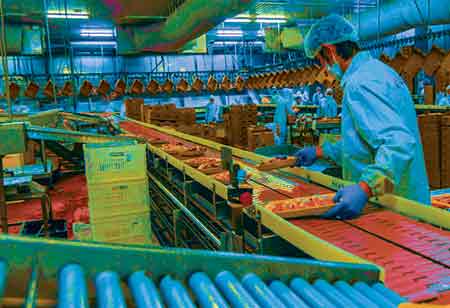Thank you for Subscribing to Food Business Review Weekly Brief
- Home
- Topics
- Alternative Proteins and Plant Based Food
- Beer and Wine
- Canned Beverages
- Coffee And Tea
- Food and Beverage Consulting
- Food and Beverage Financial Service
- Food And Beverages Marketing
- Food Distributors
- Food Ingredients
- Food Sustainability
- Plant Based Food and Beverages
- Seafood Suppliers
- Supplement Manufacturing
- Wine Investment
- News
- Vendor Viewpoint
- CXO Insights
- Conferences
- Newsletter
- CXO Awards
-
Advancements Impacting Microbiological Testing for Food Safety
Accuracy and timeliness in microbiological testing are among the most required criteria by the food sector when it comes to preventing

By
Food Business Review | Thursday, February 03, 2022
Stay ahead of the industry with exclusive feature stories on the top companies, expert insights and the latest news delivered straight to your inbox. Subscribe today.

Advanced tools, such as microbiological testing, now provides the food industry with advanced analysis that yields more accurate results in less time, assisting in the faster delivery of safe food to market.
Fremont, CA: Accuracy and timeliness in microbiological testing are among the most required criteria by the food sector when it comes to preventing and controlling the spread of foodborne infections. As a result, these characteristics are central to many scientific methodologies for microbiological examination, and they are the topic of ongoing research and development.
In recent years, for instance, real-time data regarding the presence of potentially dangerous microbiological contaminants in food matrices has become a reality, though with significant limits. This is in contrast to traditional, culture-based procedures, which can take several days to analyze, delaying decisions about food product safety and whether additional research is required. Other advancements that will continue to have a substantial impact on microbiological food safety testing include:
Culture-based tests
Methods and diagnostic test kits for bacterial infections and microbial toxins use enzyme-linked immunosorbent assay (ELISA). These immunological assay approaches rely on antigen-antibody binding, which has a high level of specificity and accuracy. Compared to traditional enrichment and plating processes, they have drastically shortened the time it takes to get results.
Biosensor-based techniques
The current state of these microbiological testing technologies indicates significant advancements in real-time testing. A biosensor is a pathogen detection device that usually has three components: a biological capture molecule, a means for translating the captured molecule-target interaction into a signal, and a data output mechanism. Although biosensor-based techniques are currently only used in a limited number of food safety tests, they provide real-time detection, mobility, and multi-pathogen detection in both laboratory and field settings.
DNA-based fingerprint techniques
The great specificity of DNA-based assays in detecting foodborne pathogens is one of their main advantages; they detect specific nucleic acid sequences in the target microorganism by hybridizing them into short synthetic oligonucleotides that complement the specific nucleic acid-based assay. One of the most rapidly evolving DNA-based analytical methods utilized in the identification of foodborne pathogens is automated polymerase chain reaction (PCR)-based technology. PCR-based techniques have excellent specificity and fast turnaround times, which could make them more popular as less expensive test procedures and instruments become available for commercial usage.






